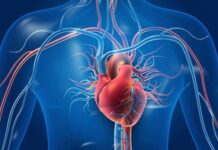New Delhi, July 27 (IANS) Tobacco and alcohol use is behind the increasing rate of head and neck cancers in India, said health experts here on World Head and Neck Cancer Day on Thursday.
World Head and Neck Cancer Day is observed on July 27 every year to raise awareness about the disease that has become a major public health issue.
According to the Global Cancer Observatory (GLOBOCAN) estimates, there were 19.3 million incident cancer cases worldwide in 2020 and India ranked third after China and the US.
Overall, 57.5 per cent of global head and neck cancer cases occur in Asia and India accounts for 30 per cent of these cases. Annually, in India, the prevalence of head and neck cancer is approximately 5,00,000 cases with over 1,25,000 deaths.
When we talk of HNC, it typically consists of anatomical sub sites like tongue, mouth, other parts of the pharynx like oropharynx, nasopharynx, hypopharynx, salivary glands, nasal cavity, larynx (voice box), etc.
“HNC arises from various risk factors, with tobacco use and alcohol consumption being the most significant contributors. Prolonged smoking or chewed tobacco (like gutka) and alcohol intake can lead to cellular damage and genetic mutations, increasing cancer susceptibility,” Dr. Deepak Sarin, Vice Chairman – Head & Neck Onco Surgery, Head and Neck Oncology, Cancer Institute, Medanta Gurugram, told IANS.
“Additionally in India, eating supari leads to changes in the lining of the skin of the mouth which can lead to mouth cancer. More recently, infections with human papillomavirus (HPV) have also been linked to cancers in the throat. This is a virus transmitted by oral sex and its incidence is on the rise,” he added.
As per a report by Cancer.net, 70 per cent to 80 per cent of head and neck cancers are linked to tobacco use, and the amount of tobacco use may affect prognosis, which is the chance of recovery.
“Early detection and diagnosis of HNC offer 80-90 per cent chances of cure. Common symptoms of HNC include a sore throat, swelling, difficulty swallowing, chronic nasal congestion, sinus infection, red patches in the mouth, numbness in the jaw, and more. It is crucial to recognise these signs and symptoms to receive timely treatment,” said Dr Mandeep Singh Malhotra, Director- Surgical Oncology, CK Birla Hospital, Delhi.
“Smoking when paired with alcohol consumption, is a sure-shot recipe for disaster. Alarmingly, HNC are detected at an advanced stage due to patient’s ignorance as symptoms like change in voice, hoarseness of voice and difficulty in swallowing, which are not alarming/glaring are often mistaken for less-damaging diseases,” Dr. Devavrat Arya, Director, Medical Oncology at Max Healthcare, Saket, told IANS.
HNC can also be caused by ulcer or sore in the mouth that does not heal and fitting dentures.
In addition, secondhand smoke may increase a person’s risk of developing head and neck cancer. Alcohol is an independent risk factor for these cancers.
The primary treatment for HNC involves surgery, radiation therapy, and chemotherapy.
However, these therapies may have some side effects, such as speech and swallowing impairment, pain and discomfort, scars, changes in appearance, fatigue and weakness, hair loss, loss of appetite, skin rash, and an increased risk of infections, among others
To combat head and neck cancer, public awareness campaigns must focus on promoting healthier lifestyles and discouraging tobacco and alcohol consumption, the doctors said.
They also recommended adopting a healthy lifestyle, relishing simple home-cooked food with ample amounts of leafy greens, exercising daily, and leading a stress-free life.
–IANS
rvt/uk






























